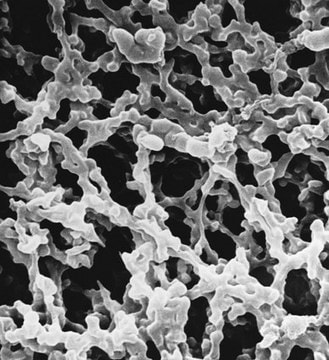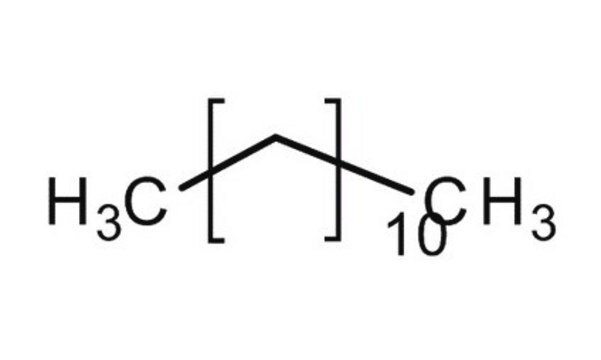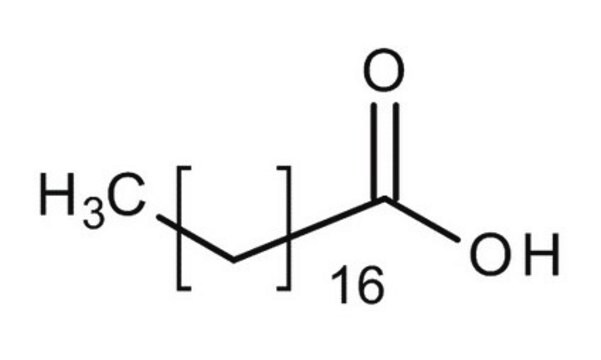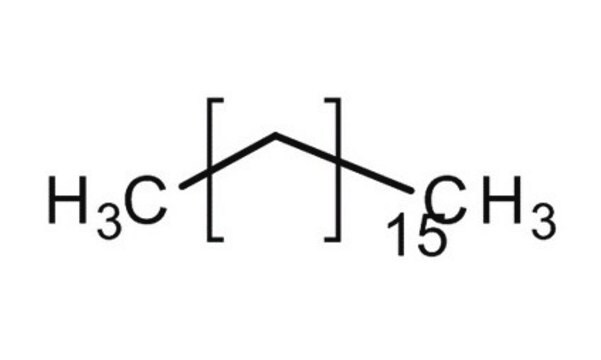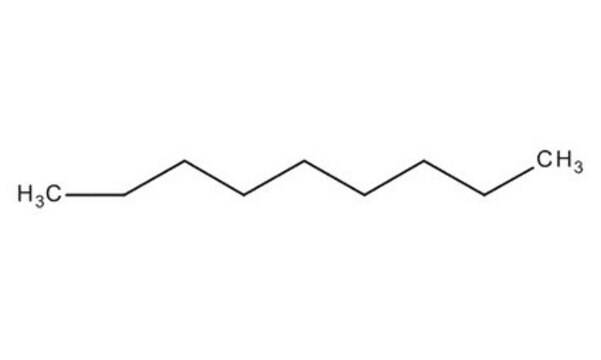8.20633
n-Hexadecane
for synthesis
Synonym(s):
n-Hexadecane, Cetane
Sign Into View Organizational & Contract Pricing
All Photos(1)
About This Item
Linear Formula:
CH3(CH2)14CH3
CAS Number:
Molecular Weight:
226.44
MDL number:
UNSPSC Code:
12352001
EC Index Number:
208-878-9
NACRES:
NA.22
Assay:
≥99.0% (GC)
vapor pressure:
<0.1 hPa ( 20 °C)
Recommended Products
vapor pressure
<0.1 hPa ( 20 °C)
Quality Level
Assay
≥99.0% (GC)
form
liquid
kinematic viscosity
<7 cSt(40 °C)
mp
18 °C
transition temp
flash point 135 °C
density
0.77 g/cm3 at 20 °C
storage temp.
2-30°C
InChI
1S/C16H34/c1-3-5-7-9-11-13-15-16-14-12-10-8-6-4-2/h3-16H2,1-2H3
InChI key
DCAYPVUWAIABOU-UHFFFAOYSA-N
Application
- Determination of solvation parameter model compound descriptors by gas chromatography.: This research explores the use of gas chromatography to determine solvation parameters of various compounds, including n-Hexadecane. The study highlights n-Hexadecane′s role in solvation parameter models, which are crucial for understanding solvent-solute interactions in various chemical processes (Poole, 2024).
- Shear-Responsive Sol-Gel Transition of Phase Change Material Emulsions for an Injectable Thermal Insulation Platform.: This study investigates the phase change properties of n-Hexadecane within emulsions used for thermal insulation. The findings reveal the potential of n-Hexadecane as a key material in advanced thermal management systems, especially for injectable thermal insulation applications (Sun et al., 2023).
- Microfluidic Fabrication and Thermal Properties of Microencapsulated N-Hexadecane with a Hybrid Polymer Shell for Thermal Energy Storage.: This paper discusses the fabrication of microencapsulated n-Hexadecane using microfluidic techniques. The encapsulation enhances the thermal stability and efficiency of n-Hexadecane as a phase change material, making it suitable for thermal energy storage applications (Yang et al., 2022).
- Microencapsulated phase change material via Pickering emulsion stabilized by cellulose nanofibrils for thermal energy storage.: The study explores the stabilization of n-Hexadecane within Pickering emulsions using cellulose nanofibrils. The microencapsulation significantly improves the thermal energy storage capabilities of n-Hexadecane, making it an effective component in sustainable energy systems (Bahsi Kaya et al., 2022).
Analysis Note
Assay (GC, area%): ≥ 99.0 % (a/a)
Density (d 20 °C/ 4 °C): 0.773 - 0.774
Identity (GC): passes test
Due to its specific melting range the product may be solid, liquid, a solidified melt or a supercooled melt.
Density (d 20 °C/ 4 °C): 0.773 - 0.774
Identity (GC): passes test
Due to its specific melting range the product may be solid, liquid, a solidified melt or a supercooled melt.
Signal Word
Danger
Hazard Statements
Precautionary Statements
Hazard Classifications
Asp. Tox. 1
Supplementary Hazards
Storage Class Code
10 - Combustible liquids
WGK
WGK 1
Flash Point(F)
233.6 °F
Flash Point(C)
112 °C
Certificates of Analysis (COA)
Search for Certificates of Analysis (COA) by entering the products Lot/Batch Number. Lot and Batch Numbers can be found on a product’s label following the words ‘Lot’ or ‘Batch’.
Already Own This Product?
Find documentation for the products that you have recently purchased in the Document Library.
Customers Also Viewed
Our team of scientists has experience in all areas of research including Life Science, Material Science, Chemical Synthesis, Chromatography, Analytical and many others.
Contact Technical Service
